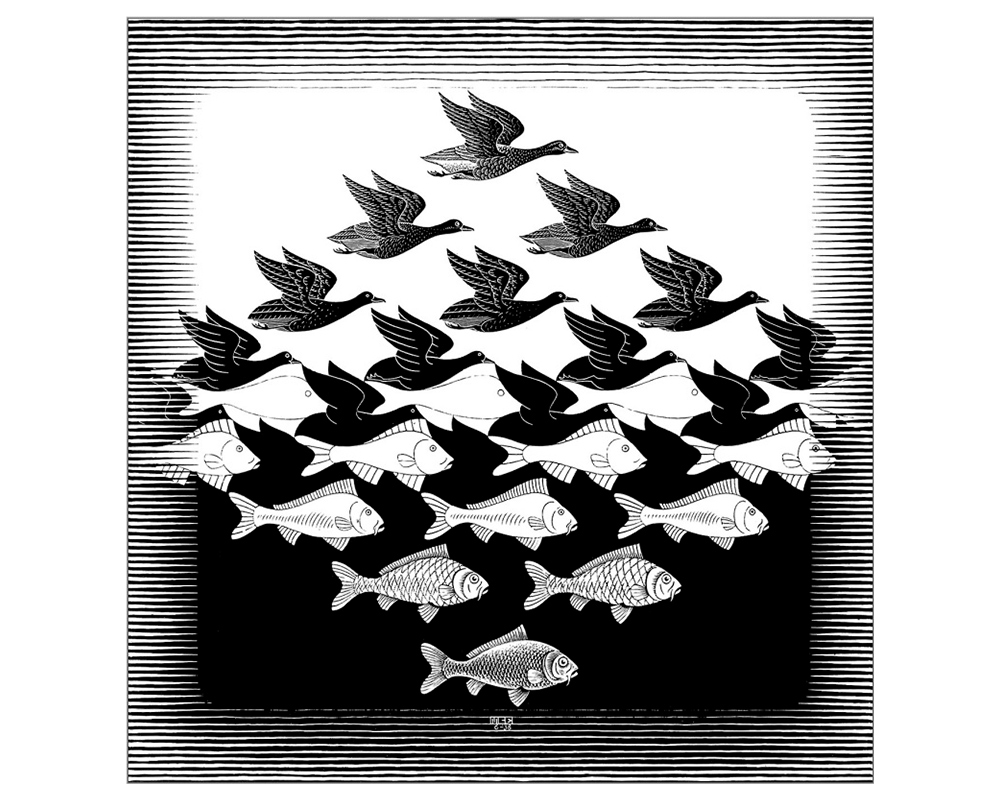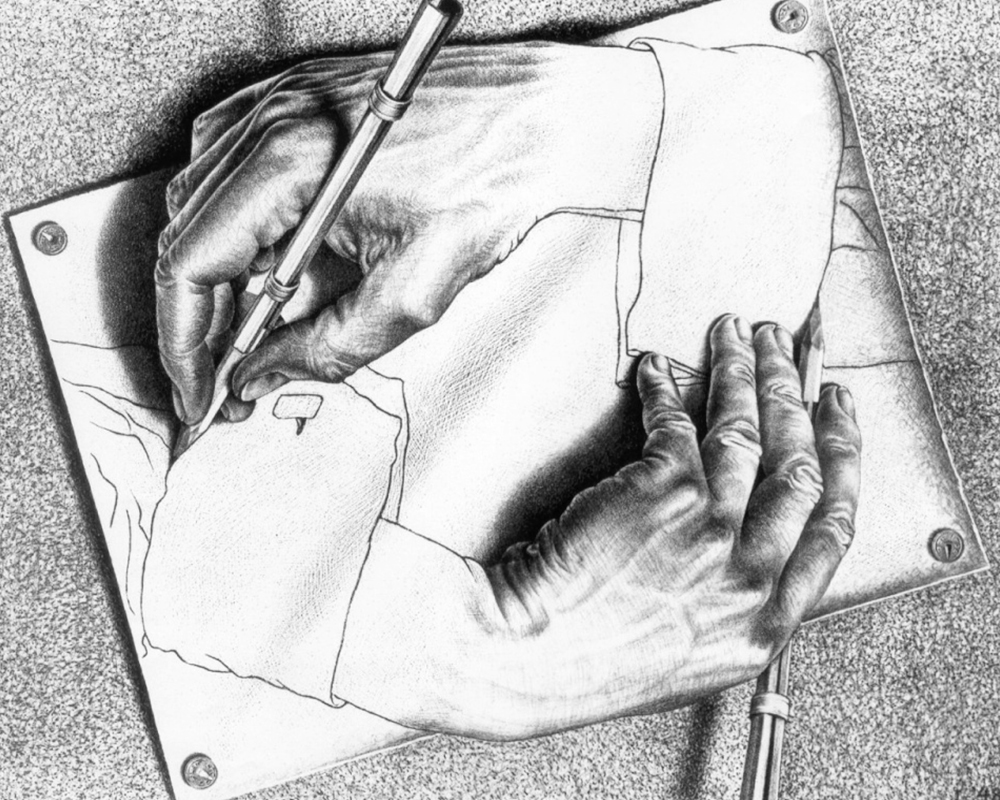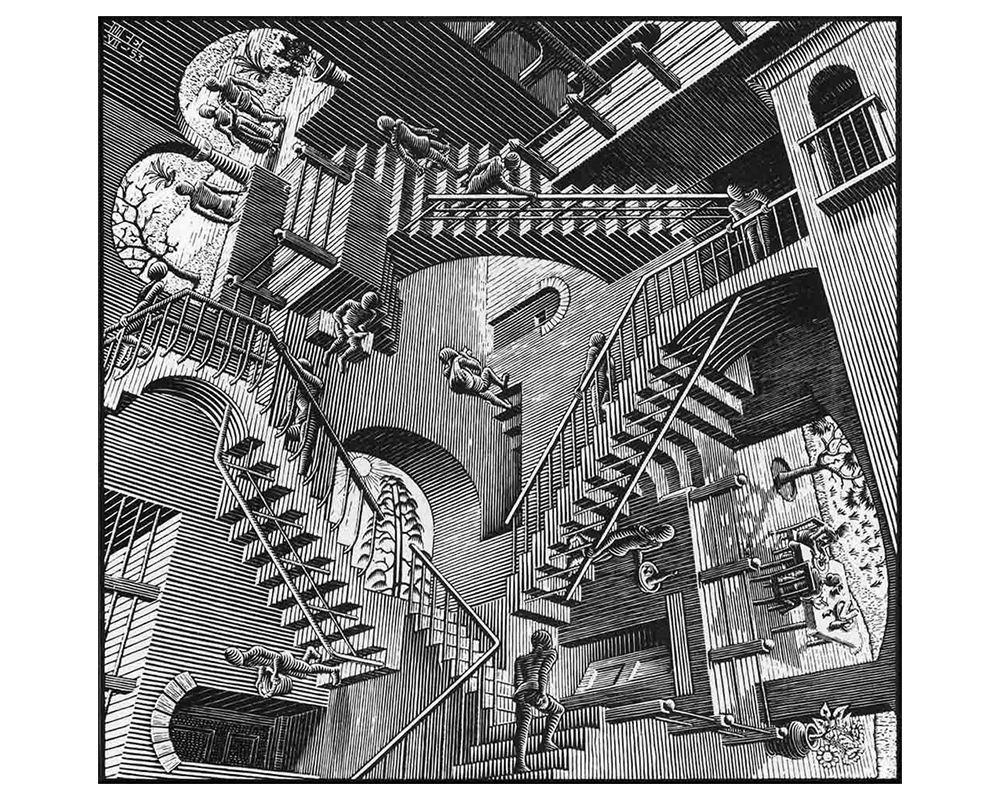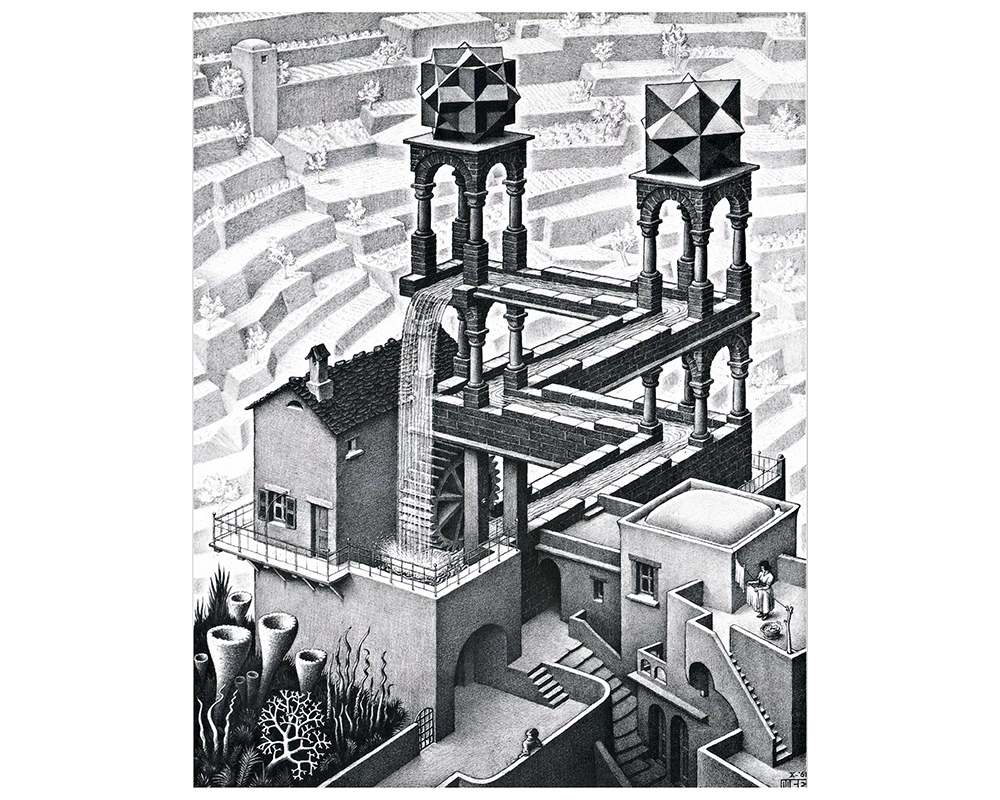MC Escher: Architect of Impossible Realities
Enter the surreal world of MC Escher, where art and mathematics converge to create mind-bending compositions.
share this!

Welcome to the surreal world of MC Escher (1898 -1972). Here, the boundaries between art and mathematics blur, and the impossible becomes tangible. Born in the Netherlands, this visionary artist created a corpus of work that transcends the limits of traditional art. It blends elements of geometry, abstraction and optical illusion to create mind-bending compositions that challenge perception and ignite the imagination.
Firstly, I have to say that I’ve been fascinated by the work of MC Escher since my very first years as a student. Since then, it has been greatly influential to my work as an illustrator. From his early explorations of tessellations and impossible structures to his later experiments with infinity and perspective, Escher pushed the limits of what’s possible in visual representation. His work also invite us to question the nature of reality itself. Throughout his career, he constantly remained interested by the interplay between order and chaos, symmetry and asymmetry. Above all, his art is a mean to explore the fundamental principles of existence.
So today we’ll delve into the mesmerizing work of MC Escher. Studying some of his most relevant optical illusions, which are testaments to his unparalleled creativity and imagination. Each one of these pieces offer a unique glimpse into his artistic genius:

“Sky and Water I”: serves as an illustration of Escher’s fascination with tessellations and the interplay between positive and negative space. In this woodcut print, birds seamlessly transform into fish as they transition from the sky to the water below. Escher’s meticulous rendering of intricate patterns and symmetrical designs showcases his mastery of geometric abstraction, transforming the natural world into a mesmerizing symphony of form and pattern.

“Drawing Hands”: is a striking example of Escher’s interest in self-reference and recursion. In this lithograph, two hands emerge from a sheet of paper, each drawing the other into existence. Through the clever use of perspective and visual paradox, Escher creates an infinite loop of creation and destruction, blurring the boundary between artist and artwork.

“Relativity”: here Escher explores the concept of perspective and spatial impossibility. This lithograph depicts a world where gravity seems to defy logic. Featuring staircases leading in multiple directions and figures moving freely between different gravitational fields. Escher’s meticulous attention to detail and precise geometric forms create a sense of dizzying disorientation. Viewers confronted to his work are often challenged to question their perception of space and dimensionality. Everything feels relative.

“Ascending and Descending”: in this mesmerizing lithograph, Escher presents a seemingly endless staircase. Here, the figures appear to both ascend and descend simultaneously. Through careful manipulation of perspective and optical illusion, he creates a paradoxical scene where the laws of gravity are suspended, inviting us to ponder the nature of infinity and the relativity of motion.

“Waterfall”: in this apparetly endless composition Escher explores the concept of perpetual motion and the illusion of causality. The lithograph depicts a waterfall that appears to flow endlessly, cascading down a series of elaborate aqueducts before returning to its source. Escher’s meticulous attention to detail and precise rendering of architectural elements create a sense of awe and wonder, also inviting us to contemplate the nature of time and eternity.
Escher’s remarkable works unquestionably transcended the boundaries of conventional art. His ability to blend mathematical precision with artistic expression certainly continues to inspire and captivate. His art undeniably challenge us to expand our perceptions and embrace the infinite possibilities of the imagination.
